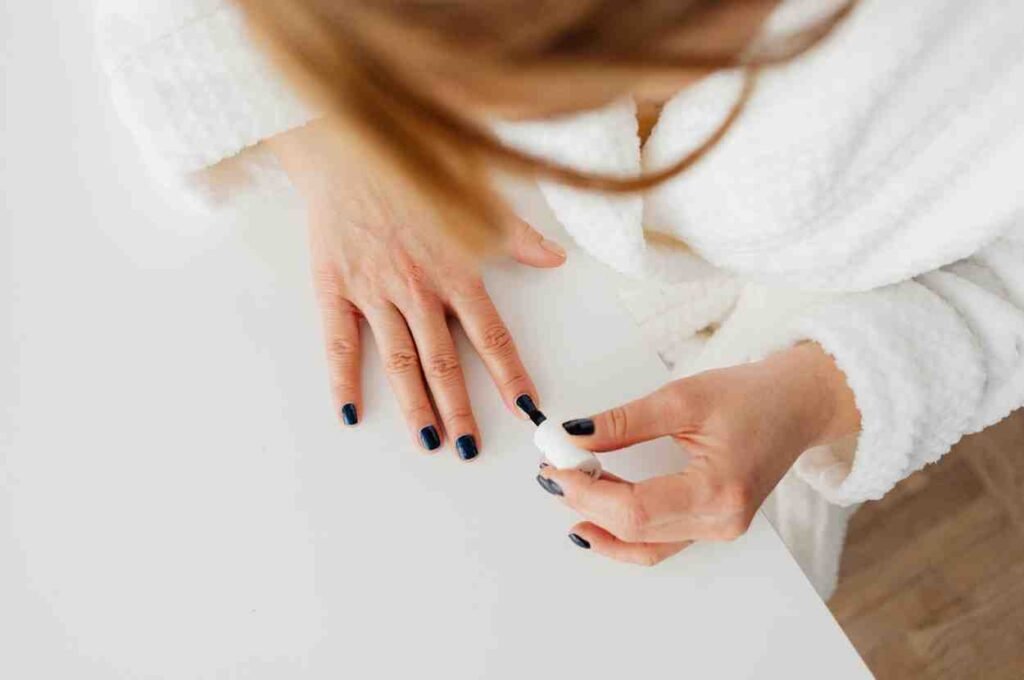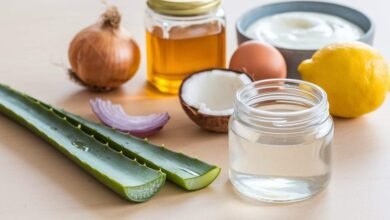How To Get Nail Glue Off Skin
In this artice we will talk about How To Get Nail Glue Off Skin. Nail glue is a must-have tool that helps secure artificial nails. Be as careful as you can because it may be a real pain in the neck when it sticks to the skin. It is of great importance to be cognizant of where to securely pull out nail glue from the skin as well for the sake of having healthy nails and skin. In this piece-to-piece, I will cover the different approaches and cautions necessary for correctly removing nail glue while minimizing any harm this product may have against the skin.
Dangers of Nail Glue on Skin
The solvent used in nail glue mainly has molecules having tight fusion that binds to surfaces including the skin. These substances not only turn the skin red but can also elicit many allergic reactions and they are often most problematic to people with sensitive insides. The nail glue has cyanoacrylate, a strong adhesive, as one of its main ingredients which has a bonding effect on various sites.
Precautions Before Removal
For the start, before applying remedies, it is necessary to know the ingredients of the glue nail. Some nail glues do contain chemical components that are very severe for nails and may injure them further especially if they are not used as instructed. If confidential about the removal process safety then it’s mandatory to get consulted from a dermatologist or a nail beauty specialist.
General Removal Techniques
Among the general methods available, there are some ones applicable to nail glue removal from the skin. The most prevalent technique involves synthetic solvent which is acetone and it helps to break down the bonds that normally hold the adhesives of the adhesive together. As an alternative to oil bases, like argan oil and coconut oil can be used to grease the glue and make it easier to remove. Secondly, you can also try an effective peeling or rubbing using a very soft cloth that moves along with the flecks of the glue.
Specific Removal Techniques
For the cases when sticky glue does not smear off easily and becomes hard, some other removal techniques would be rather appropriate to use. Acetone or solvent is used in the nail polish remover bottle as a cotton ball or swab and then applied to the afflicted area. Another efficient method is warm soap water which helps soften the glue and helps the removal of the sticker. One other option is to use petroleum jelly on the skin and let it be there for a few minutes, till it loosens the adhesive bond.
Natural Remedies
Using essential oils and household products are additional natural methods that can help remove nail glue from the skin. Because lemon juice’s acidic results can make it possible for the bond to get unstuck. Following along the line, the infusion of the affected area into vinegar solution or applying a baker soda paste (made from water) can help remove the glue.
Also Read:
- Top 10 Moisturizers for Every Skin Type
- Top 6 Benefits of Primose Oil For Skin.
- Understanding Hair Porosity: Tests, Tips, and Care Routines
- Aloe Vera Hair Masks for Healthy and Beautiful Hair
- Natural Ways to Remove Sun Tan Fast
- How to Get Thick Hair: Simple Habits for Thicker, Longer Hair
- Is Jojoba Oil Good for Low Porosity Hair?
- Top 7 Skin Benefits of Batana Oil
Commercial Products
Several brands of commercial products are obtainable, which, for special purposes, should be utilized for removing nail glue from the skin. Substitutes for regular nail glue removers are nail glue removers that contain much less sticky and more skin-friendly components as one of the benefits. As another option, the wipes destined for adhesive remover are designed to offer the user the greatest convenience and ease through the absence of mess.
Post-Removal Care
Everything concerning nail glue removal (including getting it off the skin) should be followed by appropriate post-removal care. It is good to rebalance the skin by moisturizing the irritated area using a light lotion or cream after using the chemical product to avoid the skin being too dry. Therefore, noting any existing skin symptoms in unlikely areas as well as lack of redness, swelling, or blistering is a must for a safe procedure.
Tips and Tricks
To make the cleaning of nails across as seamless as possible, while avoiding any recurring nail glue adhesion cases, some tricks of the trade are discussed below. Discarding scratching or fingernail scrubs, which can lead to skin irritation and damage, is prudent. One other thing that can help in this regard is when you use protective gloves whenever you are handling nail glue or other adhesives to keep skin contact and possible reaction to a minimum. Besides applying the proper administering procedures and handling your glue properly, could keep accidental spills on the skin.
When to Seek Professional Help
However hair and most nail glue adherence complications can be treated subtly at home, anyway, there are such cases where professional assistance should be sought. If the glue is stubborn and still left after minor attempts of removal, or if severe skin reactions are observed, it is recommended to go to the clinic. A dermatologist or a healthcare professional may provide skincare specialists and help on issues based on individual demands.

DIY Solutions vs. Professional Assistance
Nail glue may be a most often occurrence on the skin for nail art lovers; hence the question of the use of DIY tricks or visiting a specialist is quite common. Approaches to does homemade method can sometimes be the affordable and easy way to reach the goal, however, it might not always be the safest way to do it, in particular, for people with quick-reaction skin or underlying skin diseases. On the one side, professional help enables a prescribed treatment, and hence the risk of complications decreases.
Prevention Methods
The most important thing, however, is to avoid nail glue from sticking to the skin so the pain and effort of dismantling them are not involved. Using barrier creams or gloves when you apply the nail glue can form a barrier for the glue and the skin, thereby setting off the process whereby the chances of skin contact with glue or spills are reduced. Apart from that, making use of the right application techniques that suggest applying just tiny quantities of glue and preventing excessive spillage to which a glue is prone to attach, will also help to a greater extent.
Common Mistakes to Avoid
If your plan to remove nail glue from the nasty area of your skin is to be successful, you need to learn and avoid making common mistakes that can be counter-productive. When harsh instruments like knives and scissors are used to peel away the glue, chances of getting injured are substantially elevated and this may get even worse. Also, frequent use of chemical solvents e.g. acetone is capable of stripping the skin of its natural oil content and possibly, causing dryness and irritations.
Conclusion
In brief, all necessary knowledge about the right way of removing nail glue from the skin is indispensable for having nice and healthy nails and skin. Applying the tips mentioned carefully and taking the necessary precautions can allow people to avidly remove residue glue and even from the skin after clearing. Apart from whether it will be a DIY method or seeking professional assistance, the health and safety of the skin must always be put at the top of the priority list in nail care practices. Also visit.
FaQs About How To Get Nail Glue Off Skin:
How long does it usually take for nail glue to come off skin?
The length of time required for nail glue to go off the skin depends on numerous factors among which glue type and removal technique plays an imperative role. Removal in most cases requires rather long-term process which may take several minutes to gently breakdown the glue.
Can nail glue cause permanent damage to the skin?
Though the nail glue sticks pull outs from the skin are normally temporary and they can be easily removed, but the prolonged exposure or allergic reactions may lead to skin injury or irritation. It is also important to perform the removal process properly and to take care of yourself by seeking medical help promptly, if needed.
Is it safe to use acetone on the skin to remove nail glue?
Acetone, in particular, obviously can break nail glue loose from the skin, be handled with care. Skin can get quite dry quite fast if acetone is used for an extended period of time, and it can even cause irritation. It is wise to use acetone-based things not too often to avoid irritation and moisturize your skin after.
- Top 10 Moisturizers for Every Skin Type
- Top 6 Benefits of Primose Oil For Skin.
- Understanding Hair Porosity: Tests, Tips, and Care Routines
- Aloe Vera Hair Masks for Healthy and Beautiful Hair
- Natural Ways to Remove Sun Tan Fast
- How to Get Thick Hair: Simple Habits for Thicker, Longer Hair
- Is Jojoba Oil Good for Low Porosity Hair?
- Top 7 Skin Benefits of Batana Oil
- Natural Remedies for Clear Skin: Glow Naturally
- Rosehip Oil for Acne Scars: Does It Really Work?
- Almond Oil for Hair: Tips for Thicker Locks
- Top 10 Natural Remedies to Stop Hair Fall
- Benefits of Argan Oil for Long And Silky Hair
- How to Reduce Sunburn Redness Overnight
- How To Look Pretty In 5 Mins Without Makeup
- 10 Best Sunscreens For Sensitive Skin



















